Achieve Higher Performance
The Performance Culture™
What is the Performance Culture?
An organizational culture is the sum of all of the behaviors in the group and that culture determines the outcomes in every business. Therefore, to change the organizational culture and outcomes in any business you need to change the behaviors of all the people involved. Performance Culture is the organizing principle to effect maximum sustainable performance throughout the organization.
Many of the largest and most sophisticated companies are measuring Key Performance Indicators and economic benefits but not the required behaviors that produce these outcomes. The Performance Culture measures all three. In order to achieve a different organizational culture and different results you must sustainably change individual behaviors.
We look at four unique domains, each containing three elements, when measuring the Performance Culture at the enterprise level.
APEX Diagnostic Report – Enterprise
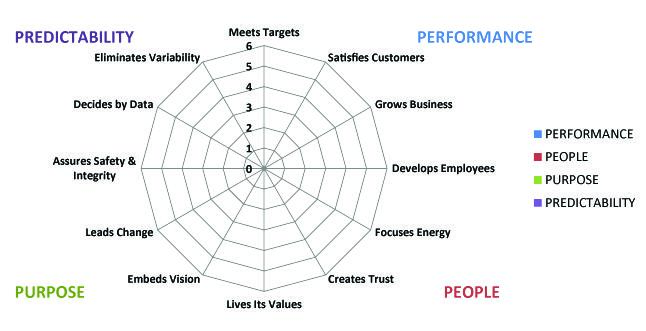
The Method
The Ascend Engagement Methodology is a proprietary, phased approach for identifying and addressing performance gaps that is proven to result in consistent alignment for attaining organizational transformation.
The fundamentals of transforming an organization and implementing sustainable change and creating a Performance Culture are inherent in the Ascend Method. Ascend defines the sequence of distinct phases of activity and the targeted participants. The structure of the method is designed to develop alignment and ownership at all levels of the organization.
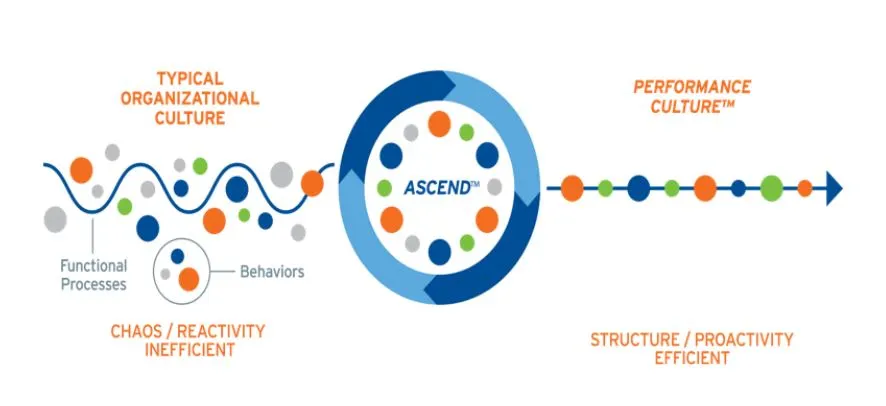
Ascend can be applied individually or concurrently on all of the Performance Culture Pyramid models. The Ascend Method is comprised of six components (APDISC) that are typically executed in three phases. Assess and Plan constitute the first phase to establish performance baselines and diagnosis current conditions. Assess and Plan can be performed individually for single site / function or as integrated components of a broader Operational Strategic Plan. The Design component is typically stand alone as the second phase. Design is the first critical change management element of the transformation process and sets the performance standards achievable for the organization. The Install, Sustain and Certify components constitute phase three and are the keys to transformation. Phase three implements a continuous improvement cycle for each stage of the functional models.
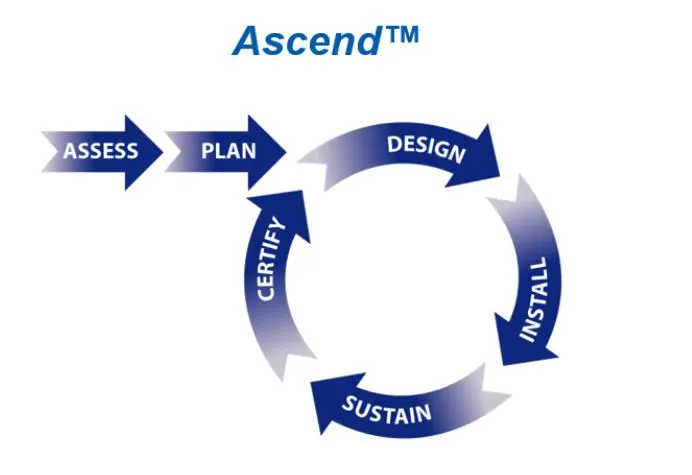
The Model
The Performance Culture Pyramid is a globally recognized and proven model for evaluating, transforming and sustaining a company’s Performance Culture. The Performance Culture Pyramid model represents a complete solution for excellence in any industrial environment, and a proven method for revealing and continually gauging your company’s Performance Culture. Production Management, Asset Healthcare, Supply Chain Management and Capital Management are fully addressed by its functional models or sides of the pyramid. The base—the Organizational Model—develops the necessary leadership, management and behavioral elements to support outstanding results.
All together, the sides of the Performance Culture Pyramid represent the most comprehensive solution available today for industry.
The Organizational Model
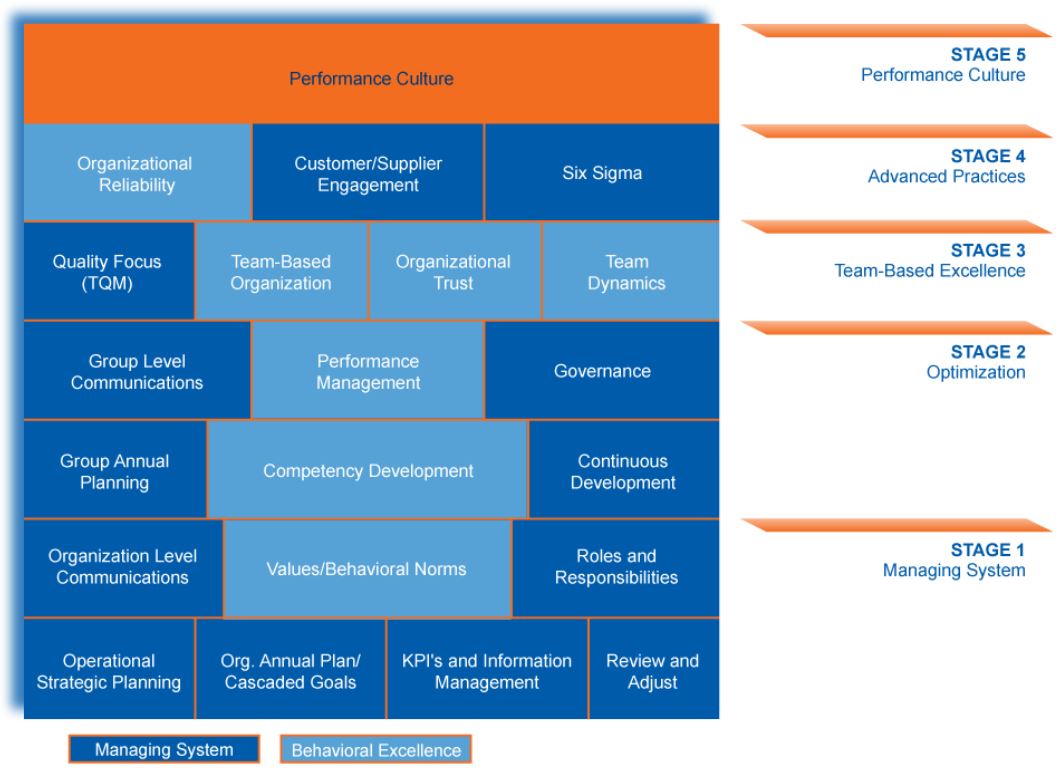
The Asset Healthcare Model
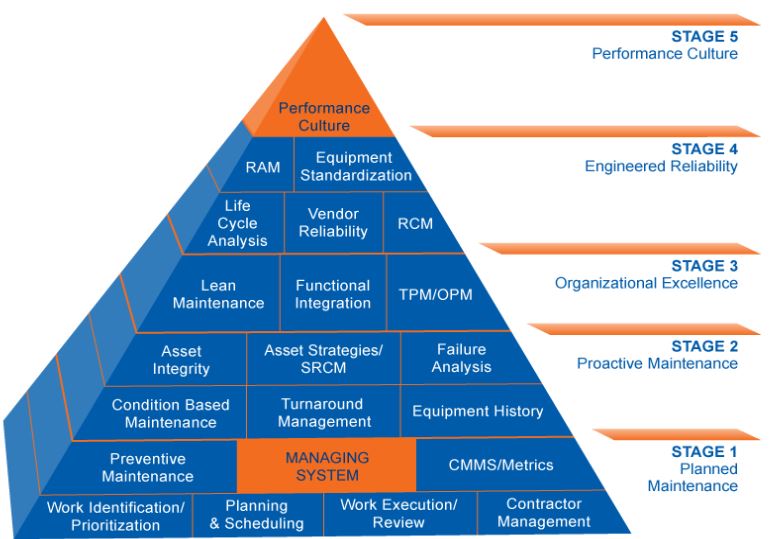
The Production Management Model
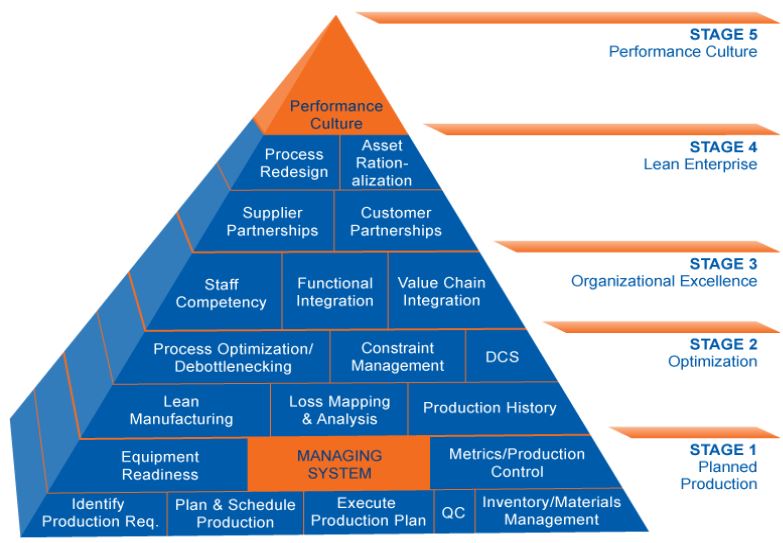
The Supply Chain Management Model
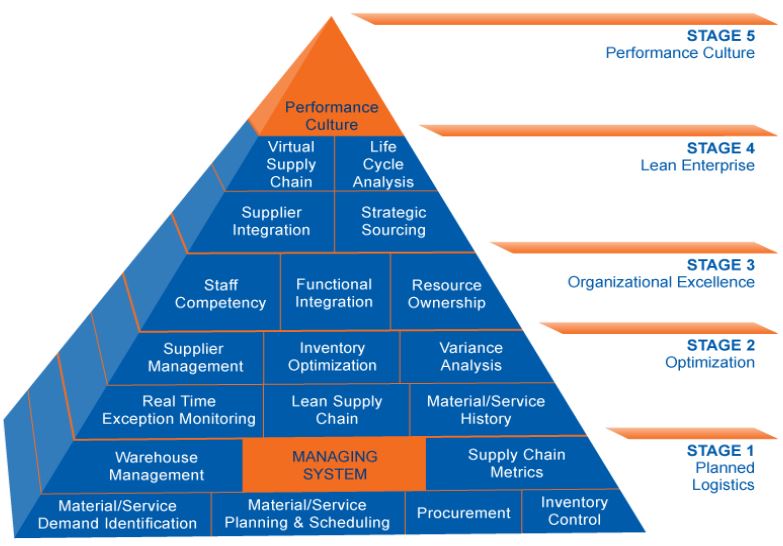
The Capital Management Model
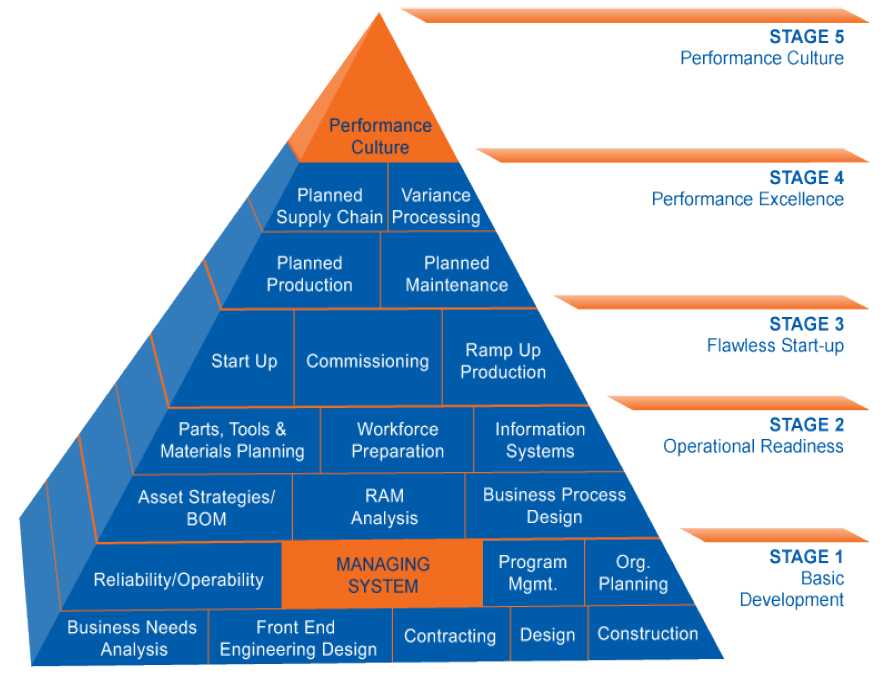
The Tool
APEX™ is a one-of-a-kind proprietary tool that measures individual and functional behaviors, identifies precise locations of barriers to sustainability, and provides evidence of organizational cultural maturity. As the old management adage goes, “You can’t manage what you don’t measure”. To manage the improvement of behaviors, you have to be able to measure them, quantify them, and trend them over time. To accomplish this, we have developed a tool called APEX™. APEX measures the underlying behaviors that support the characteristics of each element of the Performance Culture. The approach is to observe the practices, tools, and behaviors versus the defined framework and then collaboratively score each element.
The scoring criteria are defined as follows:
- No objective evidence of existence or awareness of behavior or tool
- Behavior is rarely exhibited, tool is only in the planning stage
- Behavior is inconsistent, tool developed but seldom used
- Behavior is understood but still needs practice, tool is in use but improvement is needed
- Behavior is understood and often exhibited, tool is now in use and is understood
- Behavior is understood and exhibited throughout the organization, tool is in use constantly and consistently
- Behavior is now a part of culture and belief system, tool is a way of life
The measurement of behavioral effectiveness can be applied in several layers of increasing detail. At the highest level (enterprise level), the scores can reflect the behaviors supporting the 12 elements of the Performance Culture. As granularity increases, the scores reflect the behaviors supporting any functional (Production, Supply Chain, Asset Healthcare, Engineering, etc.) aspect of the organization. APEX has the capability to measure the behavior at the functional role level (i.e., Operator, Maintenance Planner, Buyer, Operations Manager, Engineering Director, etc.) of the organization to determine sources of variability. The application of the tool can be used to establish baseline levels of performance, trend behavioral improvements over time, compare performance amongst assets in the portfolio, and summarize the progress of the organization towards a Performance Culture.
APEX Diagnostic Report Functional
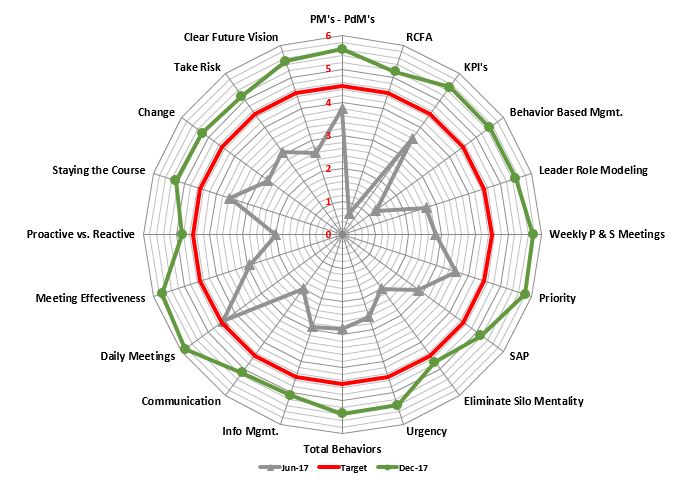
What our clients say

We’ve made leaps and bounds during this past year. We were in turmoil last year and we’ve gotten a lot more in control because of the work processes SAMI helped us get into place.
Peter Blake
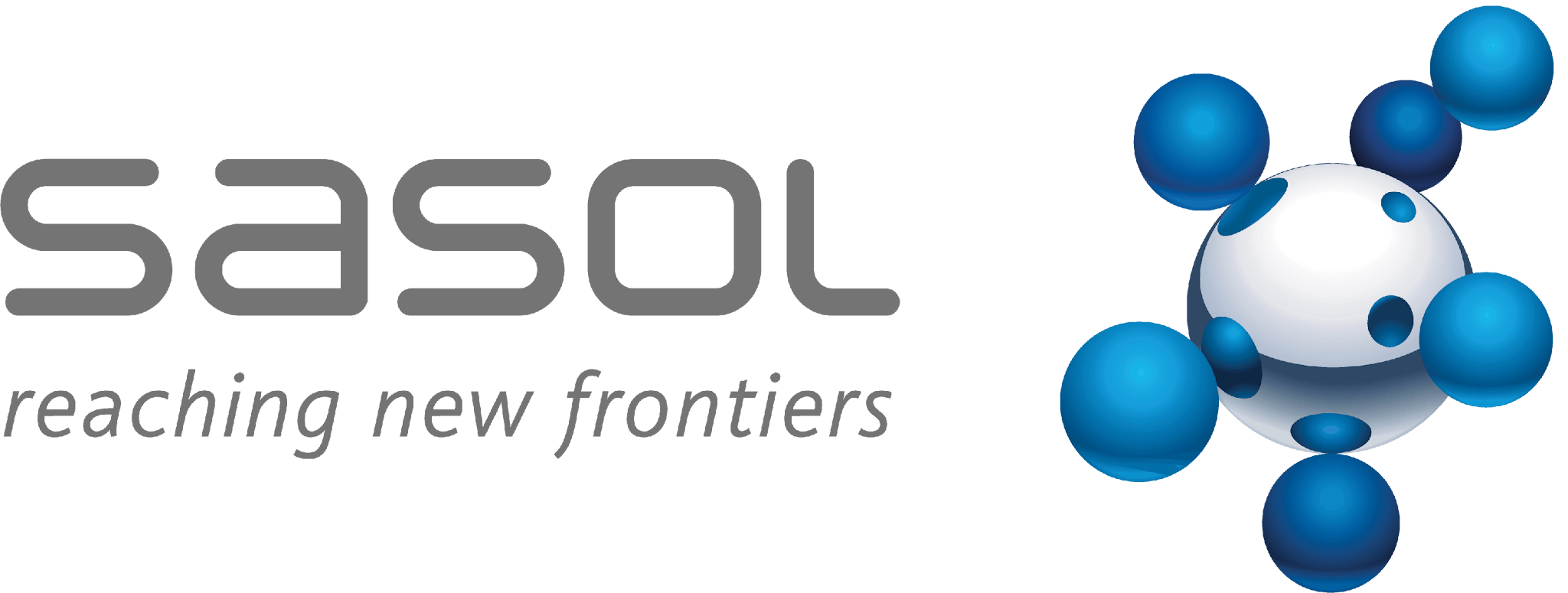
What we really liked about SAMI’s approach to maintenance or to asset management was the fact that it is a bottoms up process. I think in reference to any business process redesign or re-engineering it’s different in the sense that it’s engaging people in activities at the lowest possible level.
Sieb Sieberhagan
